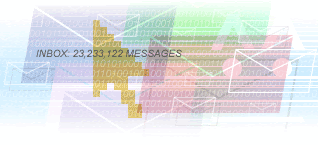Of course AgentCEO’s want to save money. Now you can save money and the planet by making your home and office more energy efficient.
(By the way, feel free to send these tips to your own customers and prospects.)
Here’s a list of 5 energy saving tips that take 5 minutes of less to complete.
1. Go Fluorescent- $60 savings
While fluorescent light fixtures may be a thing of the past, fluorescent bulbs are here to stay. Replace your incandescent bulbs with compact fluorescent ones--they are four times more energy efficient. New types of fluorescents provide a much more natural-looking light. This quick mini-project can save you about $60 a year on your utility bills. Fluorescent bulbs will set you back about $4.00 apiece (buy them in bulk). Of course, if you’ve got fluorescent tube lights already but want to replace them, talk to folks at your local lighting showroom or a well-stocked hardware store. There are newer tubes that emit a warm, almost sun-like glow.
2. Get Reflective
If replacing your old windows isn’t within your budget this year, think about covering the glass with a protective film. Found at any home improvement store, this film keeps retain heat during the winter and reflect it in the summer. Some brands boast up to a 70% reduction in heat during those hot months, which is good news if you aren’t lucky enough to own an air conditioner! Other pluses: the film can prevent your belongings from fading due to sun exposure.
3. Bundle Up…
Your Water Heater. Heating water requires a lot of energy and costs a pretty penny, so insulate your water heater with a kit purchased from your local home improvement store. The cover will only set you back about $10, but can save you up to 25%-40% on your water bill by retaining the tank’s heat, thereby using less water. (You can also make a cover with fiberglass insulation and metallic tape, but don’t wrap the flue collar or burner access.) If your unit is less than 7 years old, it probably is already insulated and doesn’t need to be wrapped, but you can insulate your hot water pipes instead for added savings.
4. Vacuum Your Fridge
As if you don’t have enough to clean, now we are telling you to vacuum your fridge! But because it’s on all the time, your fridge accounts for 8% of your home’s total energy expenditure, so this is a worthwhile project. First, take a peak behind your fridge. If there are big black coils mounted on the back of the appliance, they don’t need to be cleaned. If you aren’t so lucky, unplug the refrigerator and move it away from the wall. Check the manual to see where the coils are located (most likely underneath). Next, remove the plate protecting the coils and using a static cloth or a vacuum with an attachment, clean the dust off of the coils moving from front to back. Replace the plate when you are done and plug in the fridge. Experts recommend that you clean the coils once every 6 to 12 months, depending on your lifestyle. (If you have pets or live in an area that’s prone to dust, it’s best to clean them more often.)
5. Change your Settings
If it isn’t already, turn your water heater to 120 degrees Fahrenheit; you don’t really need tap water any hotter. This works both as a safety measure especially if you have small children as well as a money saving tip. When you aren’t at home, remember to turn your thermostat down to 58 degrees so that you aren’t heating an empty house, but warm enough to keep things from freezing. In the winter, keep the temperature at 68 degrees Fahrenheit; in the summer, aim for 78 degrees. Installing a programmable thermostat is a fantastic way to ensure the device is always where you want it to be.
Finally, check all of your appliances for energy saving setting options and switch them over accordingly.
Labels: energy, energy saving, healthy planet, save the planet, saving money, tips
 I was reading an article about marketing in one of my favorite newsletters from Roy Williams “MondayMorningMemo” where he was listing 10 Unusual Ways to Advertise. One of them caught my attention as possibly something an AgentCEO could use.
I was reading an article about marketing in one of my favorite newsletters from Roy Williams “MondayMorningMemo” where he was listing 10 Unusual Ways to Advertise. One of them caught my attention as possibly something an AgentCEO could use.







